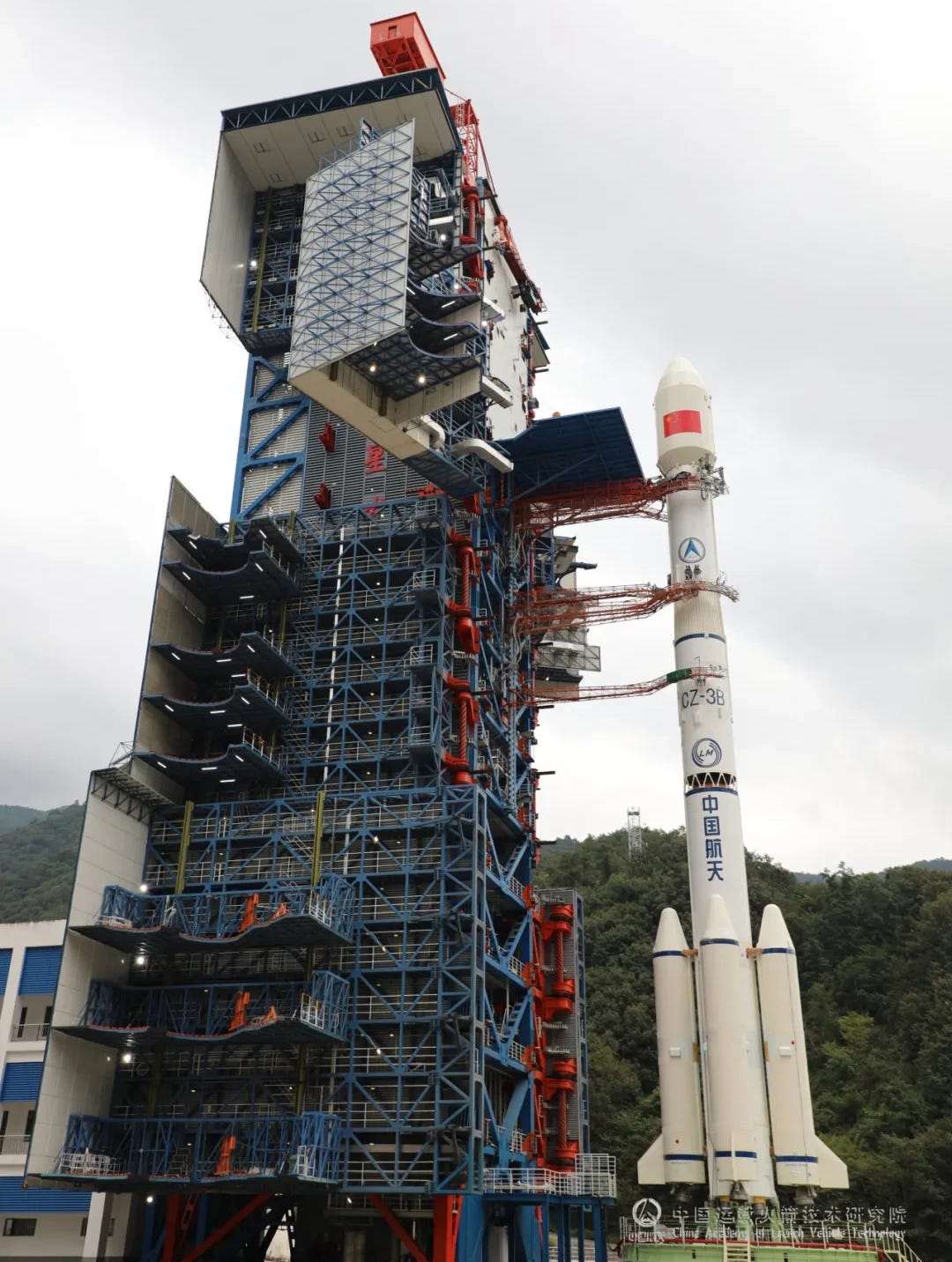New Mapping Spacecraft Delivered From Xichang [Long March 3B/E]
The launch was the Long March 3B/E's tenth flight of the year too.
On October 26th at 11:55 am China Standard Time (03:55 am Universal Coordinated Time), a Long March 3B/E lifted off from Launch Complex 3 at the Xichang Satellite Launch Center, flying into sun-synchronous orbit with one satellite.
Riding into orbit was the Gaofen-14-02 (高分十四号02星) optical stereo mapping satellite, developed by the China Academy of Space Technology. Once commissioned in orbit, the satellite will circle basically the entire Earth, creating digital topographical maps, elevation models, and other kinds of geographic maps. It has been reported that digital items created by Gaofen-14-02 will support national plans as well as those for the Belt and Road Initiative.
Gaofen-14-02 will also work alongside the already operational Gaofen-14, launched back in December 2020. That satellite is already working on a 1:10,000 scale map at a resolution between one and five meters.
In its post-launch blog post, the China Academy of Launch Vehicle Technology highlighted that to fulfill a desired high-frequency flight rate, launch team members returned to Xichang during the 76th National Day (国庆节) holidays, receiving 300 percent pay as a bonus, to ensure a smooth and timely launch process. It was also noted that future launches were being prepared in parallel to today's.
Ten Long March 3B/E’s have flown this year, with today’s mission, along with a single Long March 3C/E, all successfully. Toward the end of last year, the China Academy of Launch Vehicle Technology stated that they were aiming to launch the Long March 3B/E over a dozen times as part of a period of high-frequency launches. With the current launch rate, almost a dozen launch missions with the rocket could occur before the end of 2025.
To keep up production with the launch rate, Capital Aerospace Machinery Co Ltd (首都航天机械有限公司) is actively working on multiple Long March 3A series vehicles (consisting of the Long March 3A, 3B, 3C) simultaneously to ensure at least one vehicle is produced per month. Both increasing the launch cadence and production of Long March 3A series is said to be thanks to optimizations in the design, schedule, and personnel assignments.
Today’s mission was the 111th launch of a Long March 3B vehicle, and the 603rd launch of the Long March launch vehicle series. This was also the 67th launch from China in 2025.
Liftoff video via Cosmic Penguin on Bluesky.
Check out the previous Long March 3B/E launch
ChinaSat-9C Takes off to Replace Aging Satellite [Long March 3B/E]
A Long March 3B/E blasted off from Launch Complex 2 at the Xichang Satellite Launch Center at 20:37 pm China Standard Time (12:37 pm Universal Coordinated Time) heading for geostationary orbit with a single satellite.
What is the Long March 3B/E?
This section is for those less familiar with China’s Long March series of launch vehicles.
The Long March 3B is an older-generation geostationary orbit workhorse of the China Academy of Launch Vehicle Technology. The first two stages and four boosters of the rocket burn Dinitrogen Tetroxide and Unsymmetrical Dimethylhydrazine, with liquid hydrogen and liquid oxygen in the third-stage.
Over the rocket’s almost twenty-eight-year launch history, two versions of the vehicle have flown, the 3B and 3B/E. Since 2012, only the 3B/E variant has flown due to its increased payload capacity. The payload capacity of the launch vehicle is currently as follows:
11,500 kilograms to low Earth orbit
7,100 kilograms to a sun-synchronous orbit
5,500 kilograms into a geostationary transfer orbit
2,000 kilograms into geostationary orbit
The first-stage is powered by four YF-21C engines that burn Dinitrogen Tetroxide and Unsymmetrical Dimethylhydrazine to generate 302 tons of thrust, while the boosters are powered by one YF-25 engine burning the same fuel to generate 72 tons of thrust each. Combined the four boosters and first stage generate a thrust of 590 tons. The second stage is powered by one YF-22E and four YF-23F vernier engines that also burn Dinitrogen Tetroxide and Unsymmetrical Dimethylhydrazine to generate 81 tons of thrust. The third-stage is powered by two YF-75 engines that burn liquid hydrogen and liquid oxygen to generate 17 tons of thrust.
On the launch pad, the Long March 3B/E is 56.3 meters tall and weighs 458,970 kilograms when fully fuelled. The first and second-stage have a diameter of 3.35 meters, while the third-stage has a diameter of 3 meters, along with the four boosters diameter of 2.25 meters, and the fairing has a diameter of 4.2 meters.
So far, every Long March 3B launch has occurred from the Xichang Satellite Launch Center, in the south of Sichuan province.
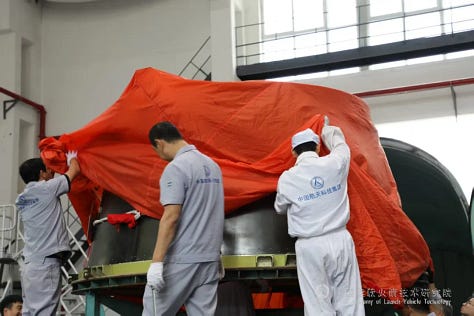
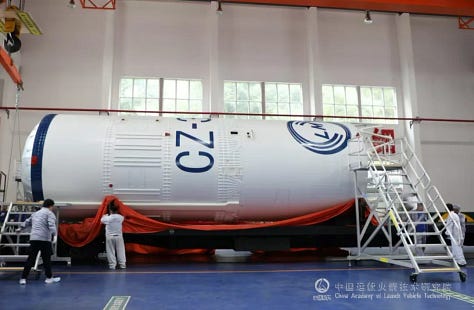
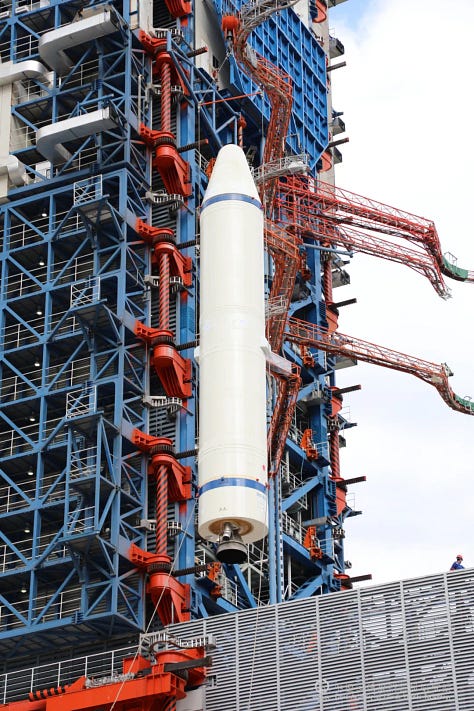



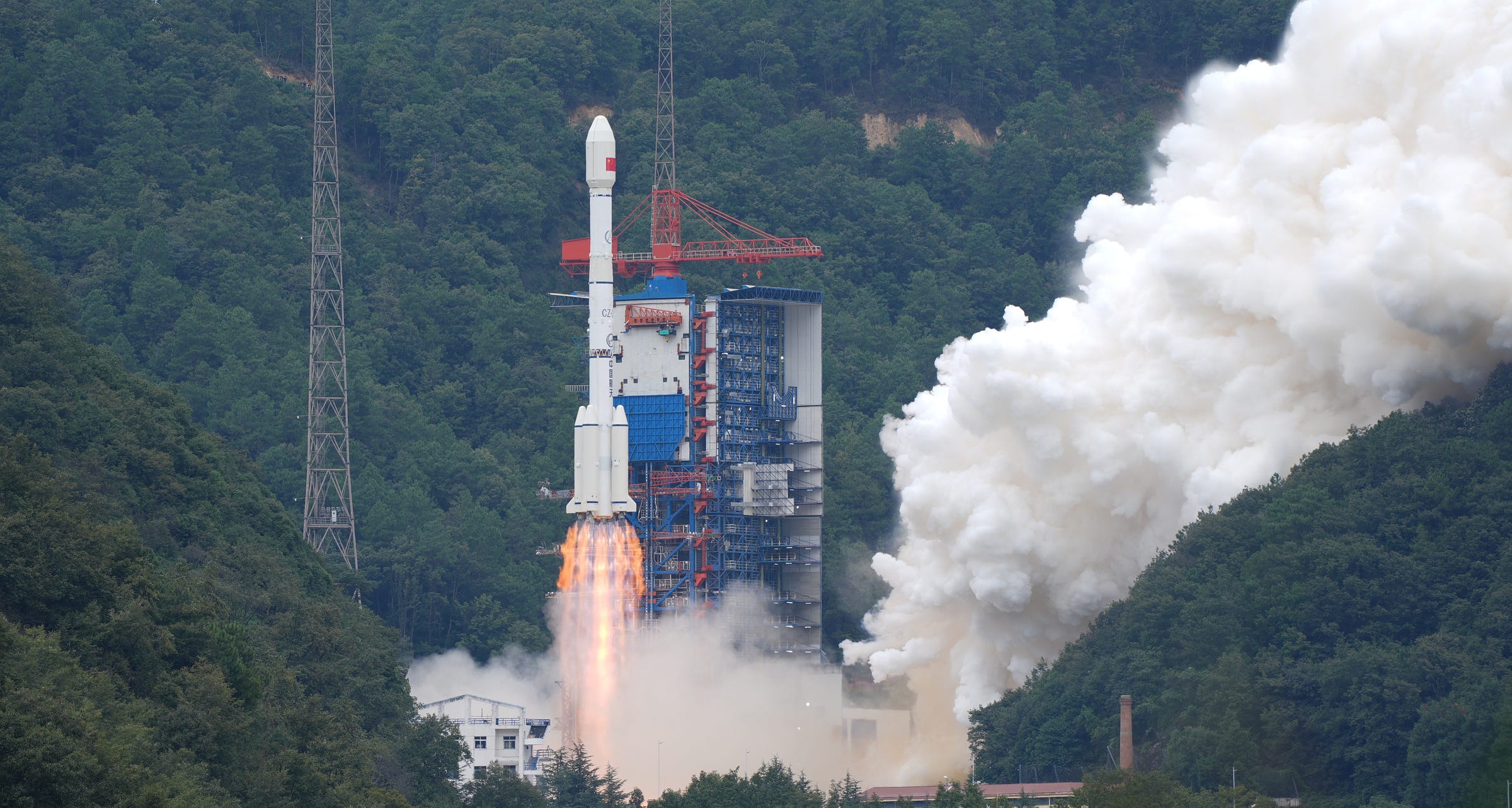

![ChinaSat-9C Takes off to Replace Aging Satellite [Long March 3B/E]](https://substackcdn.com/image/fetch/$s_!pphp!,w_1300,h_650,c_fill,f_auto,q_auto:good,fl_progressive:steep,g_auto/https%3A%2F%2Fsubstack-post-media.s3.amazonaws.com%2Fpublic%2Fimages%2F2b777d60-b436-44c6-a707-392210e25bd8_1714x961.jpeg)
